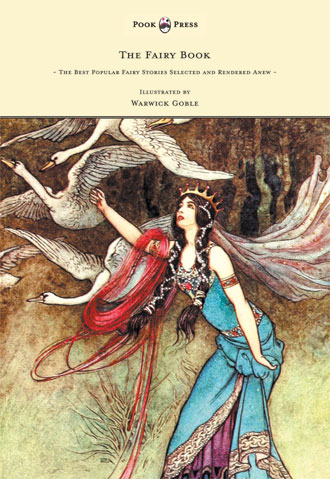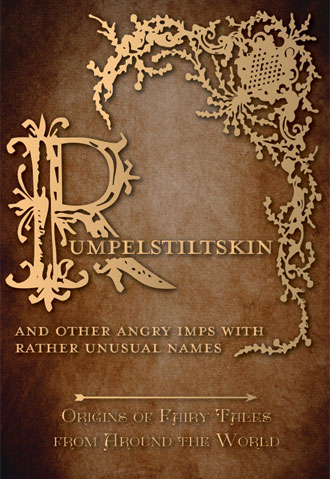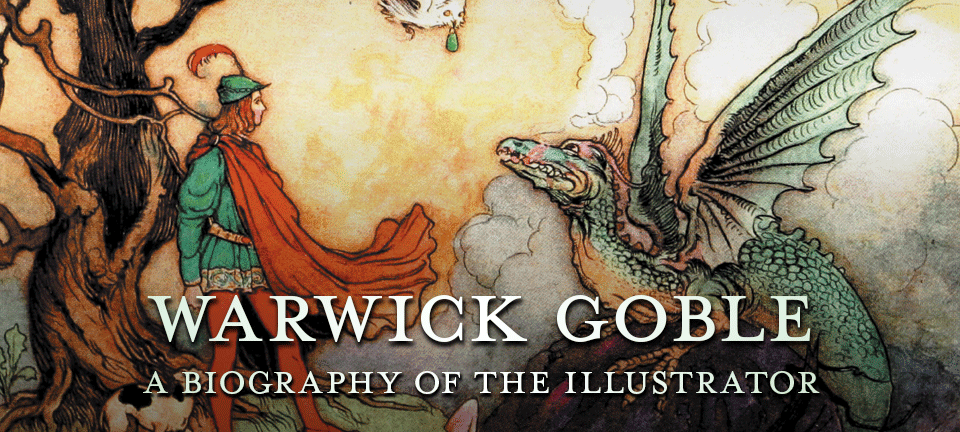
Warwick Goble Biography
Warwick Goble was born on 22 November 1862 in Dalston, North London. The son of a commercial traveller, Goble studied first at the City of London School and then at the Westminster School of Art. During this time he worked at a printing company specialising in chromolithography and illustrated sections of the Westminster Gazette and the Pall Mall Gazette.
Goble began contributing half-tone illustrations to various magazines in 1890, including The Boy’s Own Paper, Strand Magazine, and Pearson’s Magazine. A few years later he started exhibiting his extraordinary work at the Royal Academy. His beautiful watercolour illustrations were well suited to the new books of the early twentieth century, and in 1896 Goble began illustrating books with The Oracle of Baal. In 1897 he provided illustrations for the serial of H. G. Wells’ The War of The Worlds in Pearson’s Magazine and, a year later, became the first person to illustrate Wells’ masterpiece in its novel form. Following this Goble continued to contribute illustrations to a number of scientific romance works for a short time.
SELECTED BOOKS
Thanks to books such as Rip Van Winkle (1907) and Arabian Nights (1907), fantasy books containing colour plates became incredibly popular. Arguably taking inspiration from Edmund Dulac‘s Japanese style and already an accomplished watercolour artist, Goble was well positioned to take up the mantle in a market that increasingly demanded colour-plate books. He took to the task readily, producing more books in the period between 1909 and 1913 than he had done in the entirety of his career previously. He became the resident illustrator of gift books for MacMillan in 1909, where he illustrated The Water Babies (1909) Green Willow and Other Japanese Fairy Tales (1910) and which were amongst the most elaborately illustrated volumes of the time. Although the influence of Dulac existed in these works, it was clear that Goble was beginning to foster his own unique style at this point.
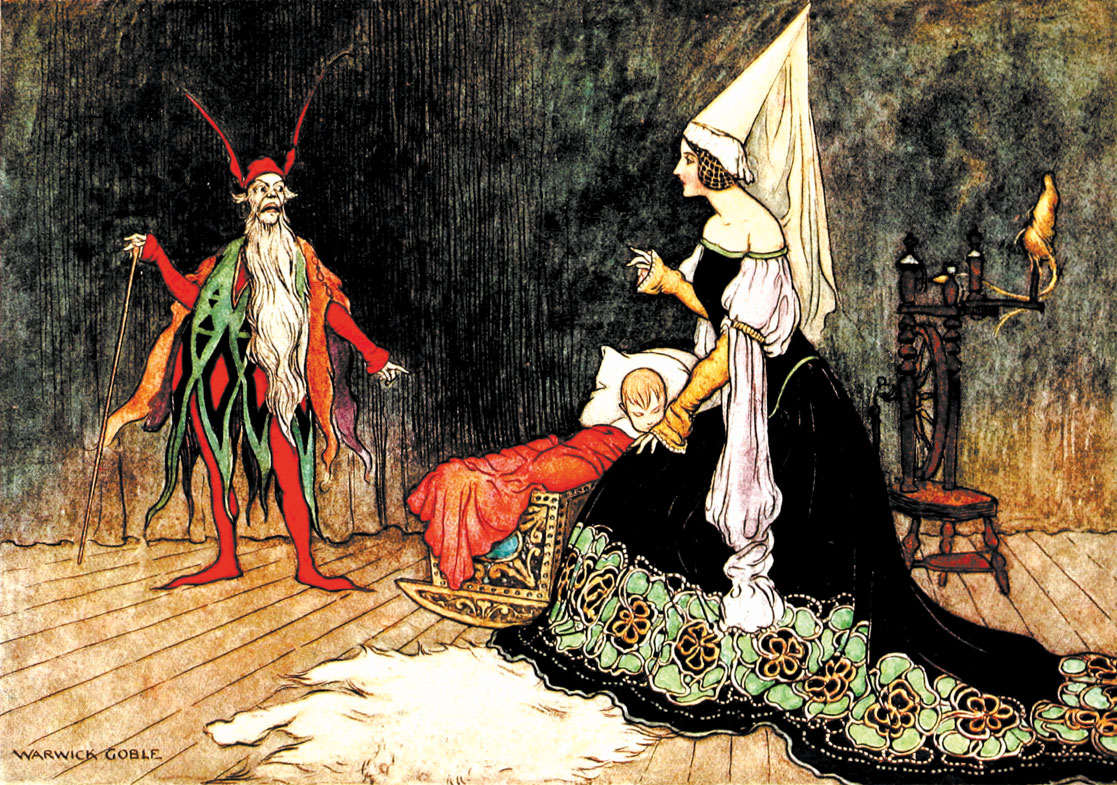 The Fairy Book, Warwick Goble, 1923.
The Fairy Book, Warwick Goble, 1923.
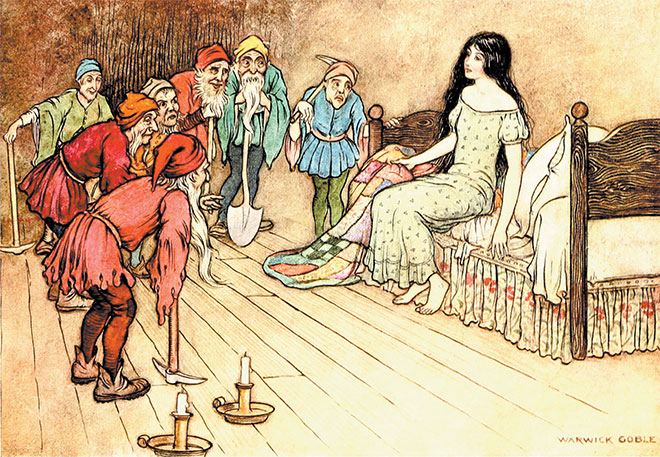 Snow White illustration by WarGoblewick , 1923.
Snow White illustration by WarGoblewick , 1923.
In 1911 Stories From the Pentamerone was published and The Fairy Book – The Best Popular Fairy Stories in 1913 , each containing 32 unique colour plates. Stories From the Pentamerone was a beautiful example of Goble’s Japanese techniques and was one of many which would come to solidify his reputation as a master illustrator of Asian story books. Folk Tales of Bengal (1912), Indian Myth and Legend (1913), and Indian Tales of the Great ones (1916) were subsequent titles that fell into a similar category. Although of a slightly different vein, Chaucer (1912) was another notable example of Goble’s marvellous illustrative proficiency. The arrival of the First World War saw him working in Woolwich Arsenal’s drawing office, and he took a complete hiatus from illustrating at one point to volunteer for the Red Cross in France.
After the war he continued with his work, illustrating The Cistercians in Yorkshire in 1919 and The Book of Fairy Poetry in the following year. He did occasional work for New York MacMillan and produced some of his most famous illustrations for Robert Louis Stevenson‘s Treasure Island (1923) and Kidnapped (1925). His last contributions adorned the pages of Washington Irving’s Tales of the Alhambra (1926) and Elinor Whitne’s Tod of the Fens (1928), after which Goble relinquished illustration and turned his attention to cycling, sculling, and travelling. He died on 22 January, 1943 in Surrey home.
Warwick Goble’s beautiful and often haunting work arguably reached classical heights at times, and his fantastic contributions to fantasy, fairy, and Asian tales continue to bring these books to life for all those that read them to this day.
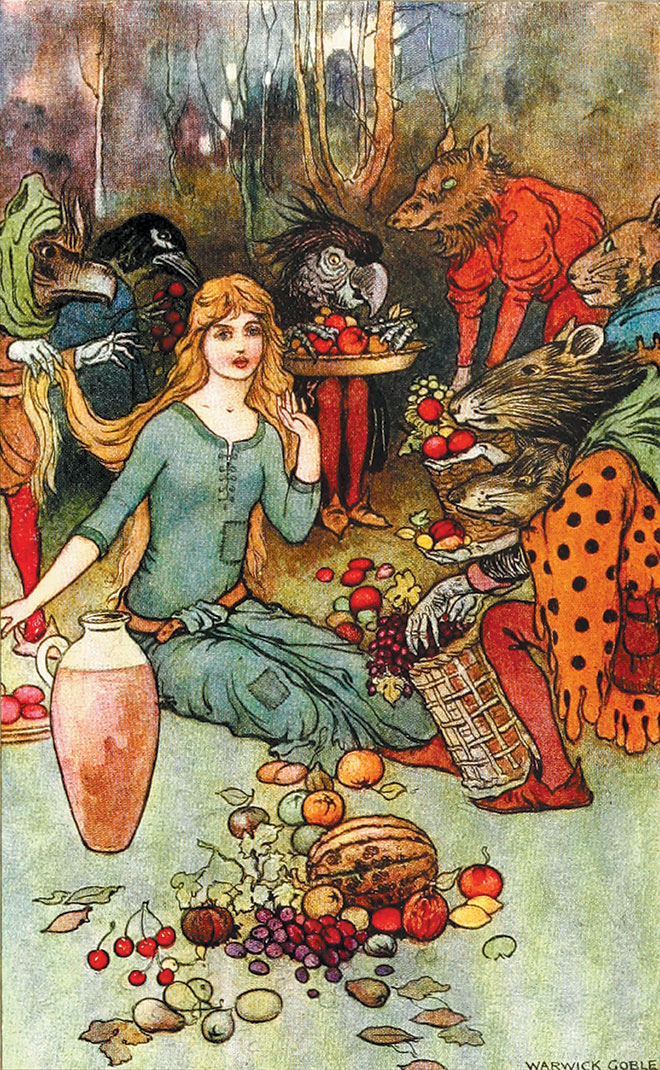 The Book of Fairy Poetry, Warwick Goble, 1920. Illustration for Goblin Market by Christina Rossetti
The Book of Fairy Poetry, Warwick Goble, 1920. Illustration for Goblin Market by Christina Rossetti

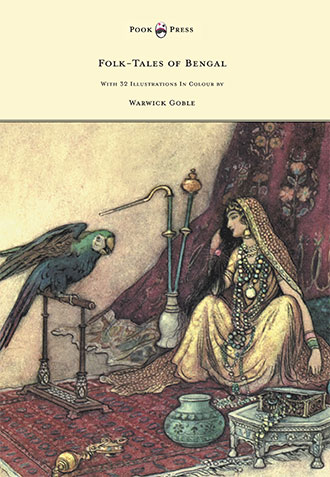
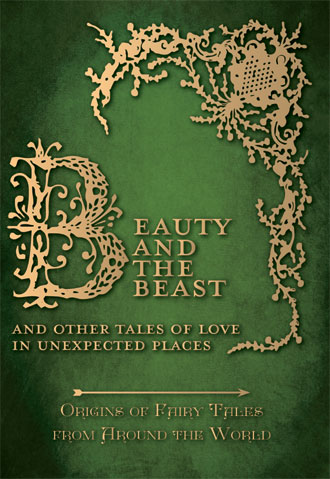 The Beauty and the Beast – and Other Tales of Love in Unexpected Places
The Beauty and the Beast – and Other Tales of Love in Unexpected Places